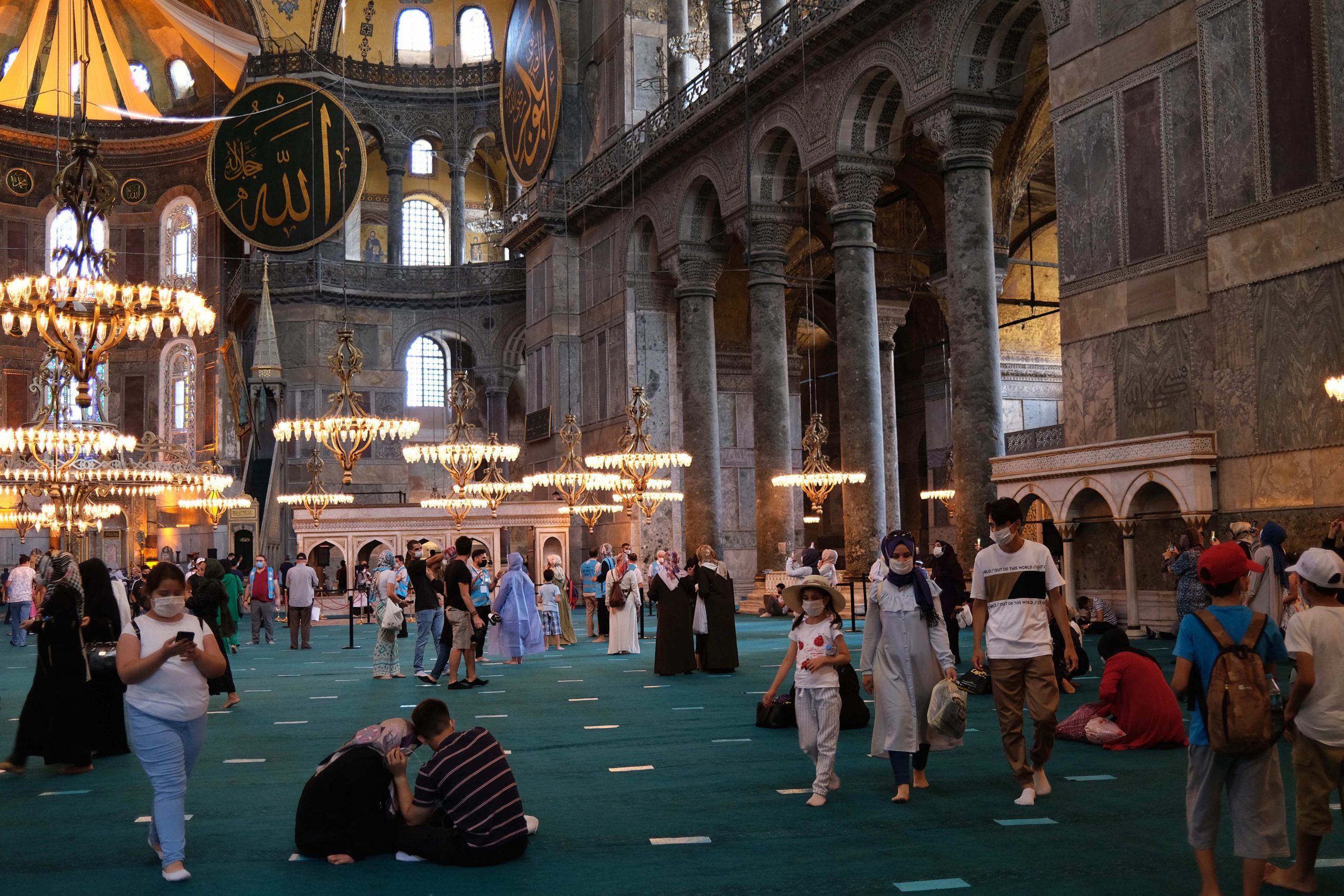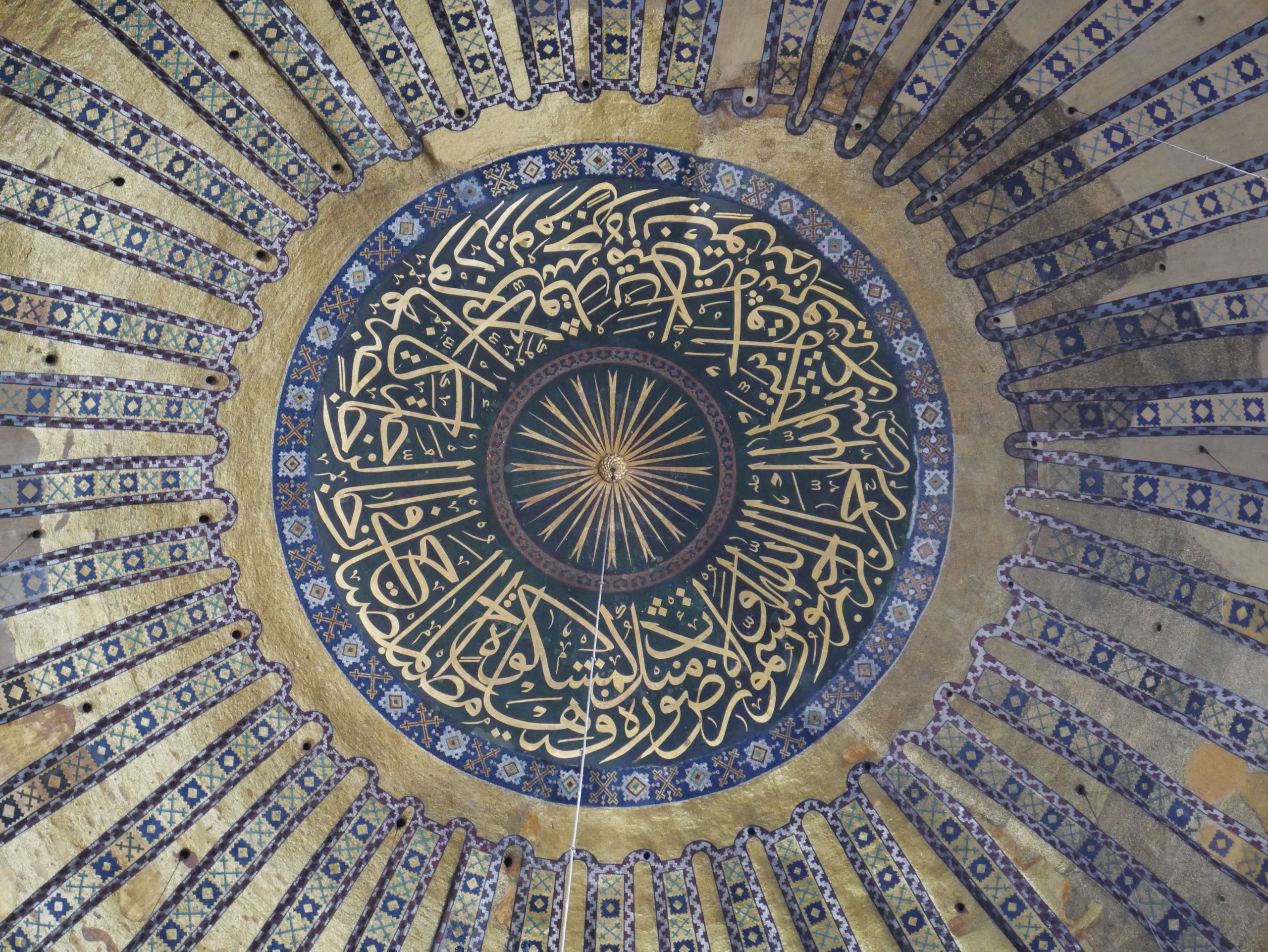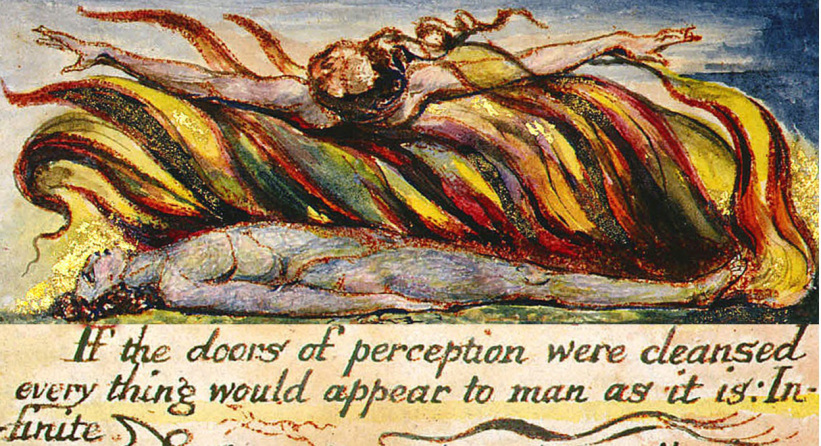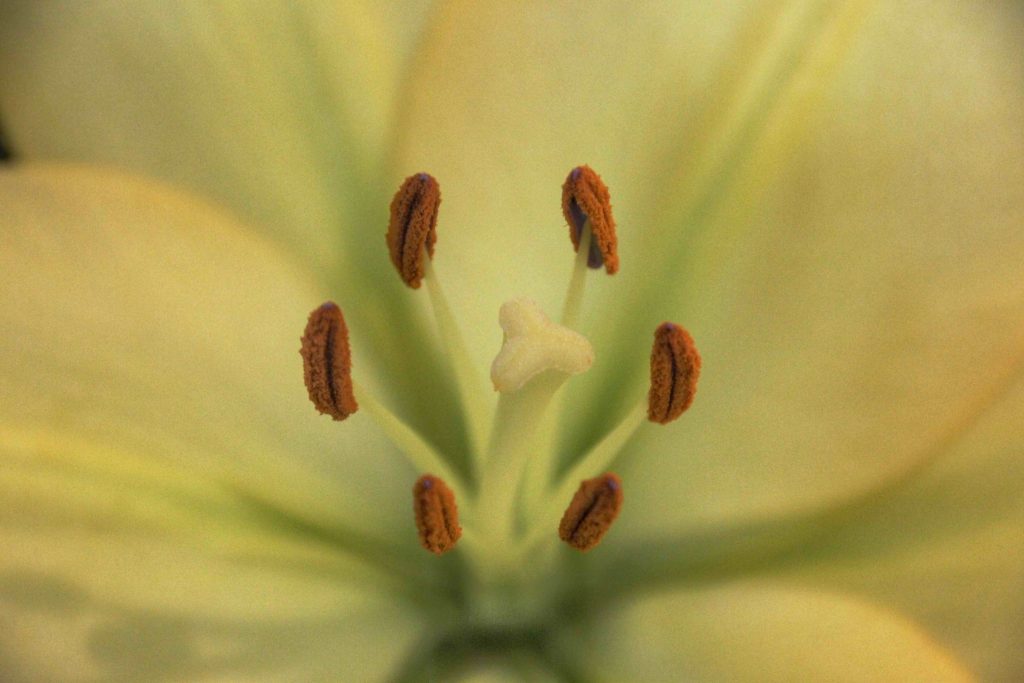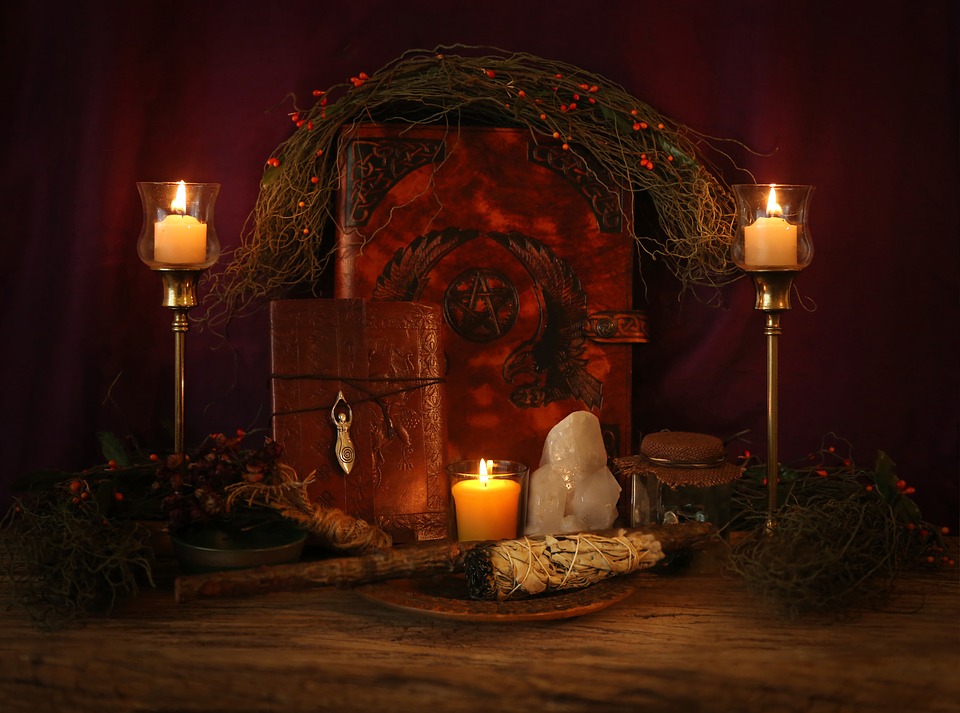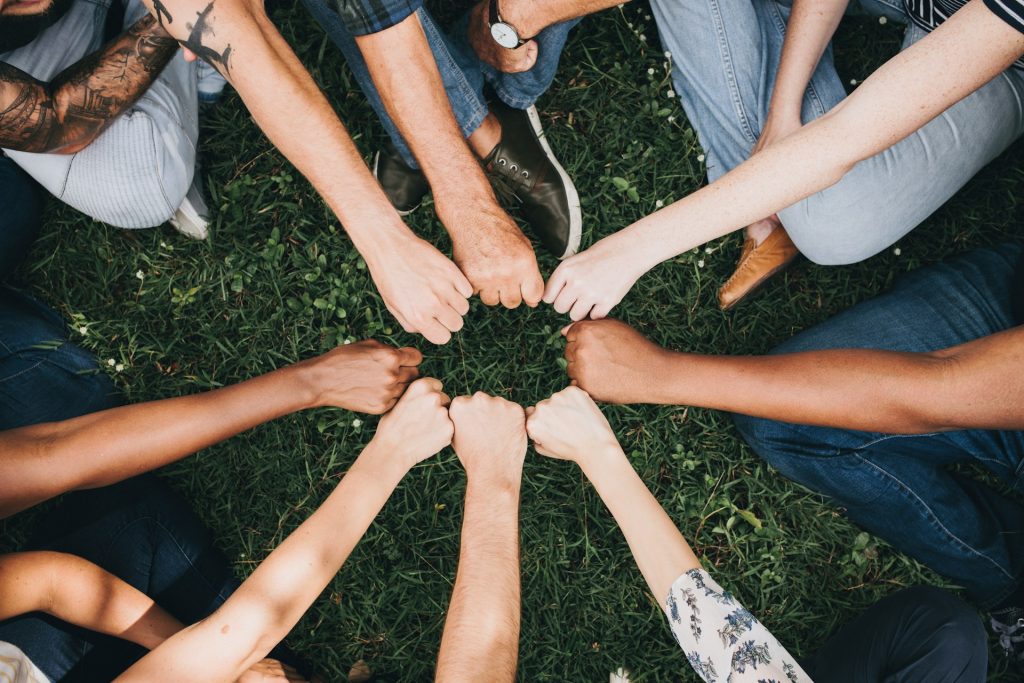What Would Hagia Sophia Say?
Photos by the Author
There are some discussions that are so big they develop a life of their own. Everyone seems to have something to say. It leaves me wondering if there is any good in adding my voice. My gut tells me to remain quiet, at least for a while, and not subscribe to a particular argumentation, because that would mean limiting myself to one lens on reality. It feels like by doing so I would only cover up the fact that I, too, am swimming in unknown waters. Plus there’s always the risk of opinions coming from an egoic identity, a kind of I-know-it-better. The debate around Hagia Sophia’s reconversion into a mosque felt just like that—trying to solidify a dynamic, multifaceted subject through definite answers; a reflex that is born out of a discomfort with not-knowing.
On July 10, Turkey’s president announced the historic decision to reconvert Hagia Sophia into a mosque. Two weeks later—after 85 years of serving as a museum—Hagia Sophia saw its first communal Friday prayer. Before being shut down for prayer in 1925, it had been a mosque for 481 years, preceded by 916 years as a church.
Government supporters and many Muslims across Turkey were jubilant. “Winning back” the monument, which for them symbolized the conquest of Istanbul, had been on their agendas for years. Many who usually wouldn’t care much about the fate of a historic building now fell into nationalist sentiments and became enchanted by the rhetoric of reconquest. Others remained indifferent. But people from the secularist strands of Turkish society were indignant. These groups are usually associated with the legacy of Kemal Atatürk. They are known for their skepticism toward, or even outright rejection of, Islam. Church leaders in and outside Turkey expressed their disapproval, which was echoed by most of Western media. Many commentators interpreted the timing of Erdogan’s announcement as a political stunt to appease his supporters and deflect attention from Turkey’s current economic downturn.
Whatever the dynamics, Hagia Sophia helped bring up the shadows that exist in Turkish society today. The strong polarization seems in line with the polarization in so many other places around the world. Each side is highly triggered by the opposite because it sees its own shadows reflected in the other. So as not to confront their shadows, both camps resort to othering. There is practically no attempt at understanding each other. True conversations happen rarely. It all reminds me of how things have been going in my own country where there is a widening gap between right-wing supporters, refugee critics, and climate change deniers on the one side, and “left alternative,” refugee-supporting, and eco-minded groups on the other.
Hagia Sophia also helped bring up the shadows in me. I have to confess, the nationalist and ultra-religious fanfare around the mosque decision disgusted me. At one point I caught myself taking sides.
It was the fortnight of the grand reopening. An Islamic youth association held a celebration event on the central square of Üsküdar, just a few hundred meters away from our apartment. The activists played Ottoman march music and bellowed into the microphone with imperialist rhetoric, claiming that Hagia Sophia had been waiting for them to liberate her. What a self-righteous thing to say, I thought, utterly put off by this display of religious machismo.
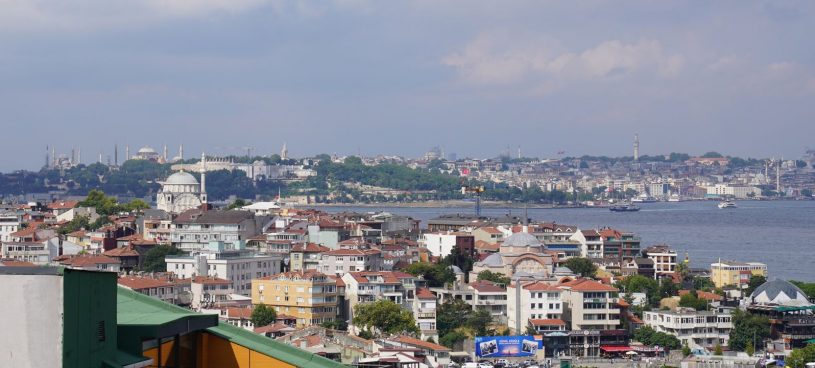
I was sitting on the rooftop with my mother who was visiting from Germany. We had bought a bottle of wine. I raised a toast, remarking in a sarcastic tone, “This is my celebration of Hagia Sophia!” followed by comments on how childish those people down there seemed.
It was only later that I realized how I was carrying the very same energy that I despised in those “Islamist reconquerers.” I wasn’t publicly acting out my shadows as they did. But at the core, was I really so different from them? Could it be that I was stuck in the same energy of self-righteousness and superiority? Here I was, the open-minded, far-traveled German who considered himself more conscious than those small-minded Turks, so hopelessly stuck in a religion they never questioned and discovered in depth. Well, was I really more conscious?
***
But let’s return to Hagia Sophia. While the reconversion issue brings up some difficult questions, the spirit of the monument lies beyond all dualistic human petty-mindedness. It is a building that throughout history had the ability to expand and withstand all kinds of earthquakes, be it physical or political.
Hagia Sophia was constructed on a hill, the site of an ancient temple, in 532–537, as the imperial cathedral of the Byzantine Empire. As such, there was a link with power from early on.
When Sultan Mehmed II conquered Constantinople in 1453, he immediately paid a visit to Hagia Sophia. Seeing the damage warfare had done to the building, he went into a melancholic reflection on the fleeting nature of worldly power. The sultan immediately recognized the spiritual significance of the monument. It is said that he walked through Hagia Sophia, marveling at the marble floor with its patterns that were reminiscent of the wavy sea as he beheld the strange, sparkling mosaics of Christian icons on the walls.
Mehmed’s deep appreciation for Hagia Sophia set the tone for a subtle dialogue which the early Ottomans entertained with the city’s Byzantine past. Considering himself an heir to the Byzantine emperors, Mehmed II retained the city’s original name “Konstantiniyye.”
Upon becoming a mosque, Hagia Sophia found its place in Islamic folklore and hagiography. A story was even spun to link the monument to the Prophet Muhammad: According to that tale, the half dome above the church’s apse had collapsed on the night of the prophet’s birth. Attempts at rebuilding it were unsuccessful until a party of Byzantine ambassadors was sent to the prophet who then gave his blessings to repair the cathedral, knowing it would one day serve the Muslim community.
Linking Hagia Sophia to the Islamic past enabled the Ottoman rulers to legitimize its conversion into a mosque without actually making major changes to its structure or decoration. In fact, the transformation of the sacred space was very gradual: Christian symbols such as relics, crosses, and icons were removed, just like the bells from the belltower. The first two minarets were added. Later, some of the mosaics on the ground floor were plastered over in line with the Islamic prohibition of images. Toward the later phase of the Ottoman Empire, large disks with the names of God, the prophet, his grandsons, and the four caliphs were installed around the hall.
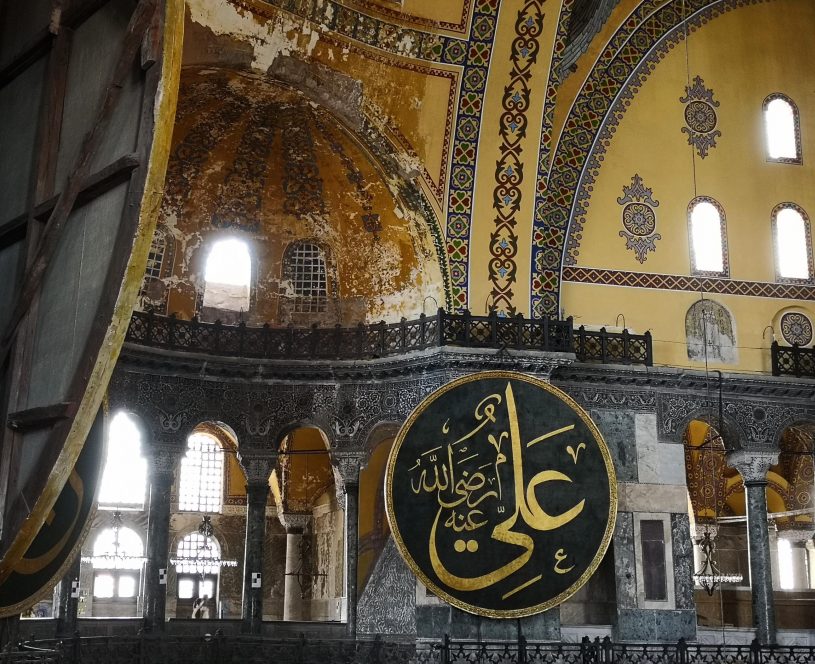
Whenever we visited the Hagia Sophia museum with groups on our Anar Journeys, we first ventured out into the space individually and then sat down for a circle of sharing. Once, one of our “pilgrims”—an American woman—related how she was interrupted by a security guard when she sat down for meditation with her eyes closed. She was told that meditation was forbidden. That warning felt like a direct manifestation of the ignorance, maybe even the fear, of the sacred which is so prevalent in our modern systems. “A museum can never be a sacred space, it is the opposite. Because it takes away what constitutes a sacred space,” a friend told me later.
On our first journey in 2018, our Greek friend, Georgia, shared the sadness she had felt because of the fact that Hagia Sophia was a museum. She sensed the pain of what had been lost. To her, the ancient columns in front of the portal represented the long-forgotten past that had never been grieved for.
When we recently talked about the reconversion of Hagia Sophia into a mosque, she paused for a while and then asked: “How can we honor what was there before? Can we connect with the land, the water and the soil that make the presence of this monument possible?”
She continued, “every place is a pilgrimage place as long as there are pilgrims. How can we bring the mystery of the sacred back and carry it into our everyday lives?”
Her questions resonated deeply. Just like me, Georgia was puzzled about the decision to make Hagia Sophia a mosque again. While the media in Greece was full of condemnations, she didn’t want Greek identity to rule her judgment. Both of us shared a wish—that Hagia Sophia would turn again into a genuine sacred space open to all humanity. It was our hope that the sacred would breathe again freely within its walls, and that it serve to visitors as a reminder of the sacred in all existence.
***
It is a Tuesday in August. The police have cordoned off the area and erected metal barriers to get crowds under control. Posts with large disinfectant bottles are a symbol for the strange times we live in. Fifty metres across the entrance of Hagia Sophia, I join the queue of men waiting to enter the mosque. Women stand in a separate queue, presumably to protect them from feeling uncomfortable in the tight squeeze of people. An elderly man with a white beard and turban mistakenly joins a group of women before realizing he is in the wrong queue. What is masculine and feminine anyway, I think, and chuckle.
Since the reopening of Hagia Sophia as a mosque, most visitors have come from conservative neighborhoods or from the Turkish countryside. A lot of women have headscarves. Some men wear shalvar, traditional Muslim baggy pants. What a different crowd from the hoards of travelers and Chinese tour groups that made up the bulk of visitors before!
Hagia Sophia is now hosting the kind people who didn’t make it here before, either because of the expensive entrance ticket or because they simply wouldn’t fancy visiting a museum. Now that it is a mosque, they have come to experience their personal moment of conquest. How will they feel when visiting the place they have heard about so much?
After 10 minutes of waiting in the scorching sun, a policeman waves us through. The first thing I notice is the taps of the shadirvan, the embellished Ottoman ablution fountain, being in use again. It’s beautiful to see the water flowing and witness the ritual washing place turn from a museum piece back into a living object.
Barefooted, I step onto the turquoise carpet that was tailor-made for the reopening. I sit down under one of the Ottoman galleries and close my eyes for a moment. A volunteer in a blue vest walks up and down the hall. As if it was his prayer, he keeps on repeating the same sentence over and over again: “Please don’t take off your mask under any circumstance!” In regular intervals he stops to rebuke people who break that rule, usually to take photos of themselves.
Toward the front of the big hall lies the prayer area, separated from the rest of the space by an airport-style barrier tape. Rectangular stickers on the carpet mark the spots where prayer is allowed. Supplication with social distancing. In some way, this rule brings to naught the experience of Islamic communal prayer which usually has believers stand shoulder to shoulder. Part of this experience is to be aware of your neighbor’s existence, awakening a strong sense of community.
I observe that some men step behind the tape not for prayer, but for photoshoots. Someone poses in between other men who are prostrating. This is the narcissism of the modern age: Taking photos of ourselves has become the new prayer, a prayer to our own images. Selfies were already a viral thing during Hagia Sophia’s museum years, but now the contrast between self and self-surrender leaps to the eye. After all, the Islamic prayer, in its essence, is meant to be a conscious act of dissolving the ego through an act of surrender to God.
Then my eyes move up from the prayer area toward the ceiling. Here is the mosaic of Mary, one of the Byzantine images whose fate was debated after the reconversion of Hagia Sophia was announced. I ask myself: Given the constant production of self(ie)-images on the prayer carpets below, can an outer image like that really distract from prayer that much more?
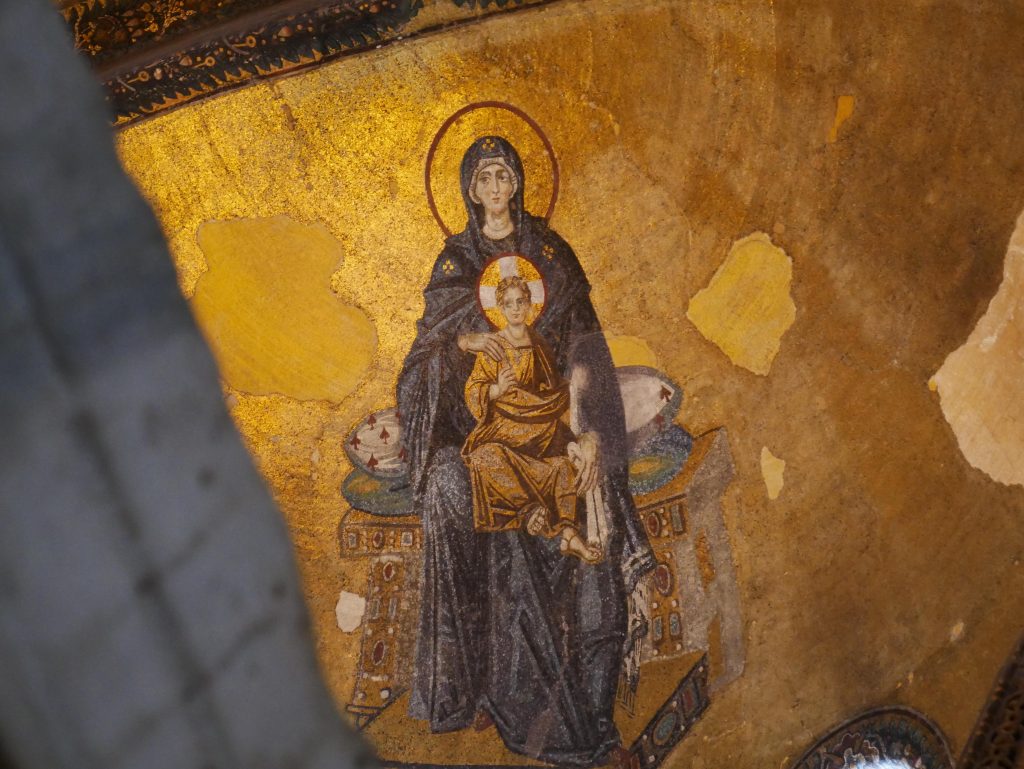
The mosaic of Mary with Jesus was the only large mosaic that was not covered with plaster by the Ottoman rulers, but concealed with a veil instead. The reason lies in the special sanctity of Mother Mary in the Qur’an. The mihrab, or prayer niche, under the Mary mosaic is even decorated with a verse (Qur’an 3:37) that alludes to Mary as the mother of Christ. It was an intentional act of the Ottomans to make that verse correspond with the veiled Byzantine image of Mary above. In modern language we could call it an act of interfaith outreach.
In July 2020, they applied the same solution. Mary is covered with four long bands of fabric. When I move to the side of the hall, I am still able to see her. Reflecting on the symbology, her veiled essence seems to represent the sacred feminine that has been concealed for a long time. Like Hagia Sophia, the “holy wisdom,” Mary stands for the qualities of all-encompassing love, creativity, and pure receptivity—qualities the world needs to remember right now. Something in me likes to think that the orthodox Muslim men who are now visiting Hagia Sophia for the first time in their lives might unconsciously be touched by this force. Maybe something might even shift in them. But again, can I even wish for something like that? Who knows what greater dynamics are at play here?
So what would Hagia Sophia say?
When I look up at the calligraphy of the Light Verse (Qur’an 24:35) in the massive dome, it feels as if getting immersed in infinity. I have a sense that the spirit of Hagia Sophia continues to dwell far beyond identities of being a church or a mosque. It wants to remind us of the sacred essence in all life, a truth that cannot be grasped or put into a box. I’m reminded of a T-shirt I once bought in India: “God is too big to fit into one religion.”
Yet, I hold on to the vision that one day the two faiths will be able to pray side by side and infuse Hagia Sophia with life. But for that, Christians and Muslims first need to grieve for what they have lost as they got caught in the outer aspects of religion. It’s the loss of a deep-felt, embodied connection to the spiritual essence of their faiths.
As I am looking toward the ceiling, it almost seems as if Hagia Sophia is amused with the human theater under its vaulted arches: the masks, the photoshoots, all the restlessness.
My visit hasn’t brought any definite answers. It’s like an onion. There are so many layers to it, each one protecting what lies below. As Hagia Sophia is shedding its trauma of being a museum for 85 years, it is still a place in progress, moving ahead to fulfill its destiny in difficult times. Where to, we don’t know. It remains a site that embodies the mystery. And it invites us to stay with that mystery, rather than jumping into quick answers.
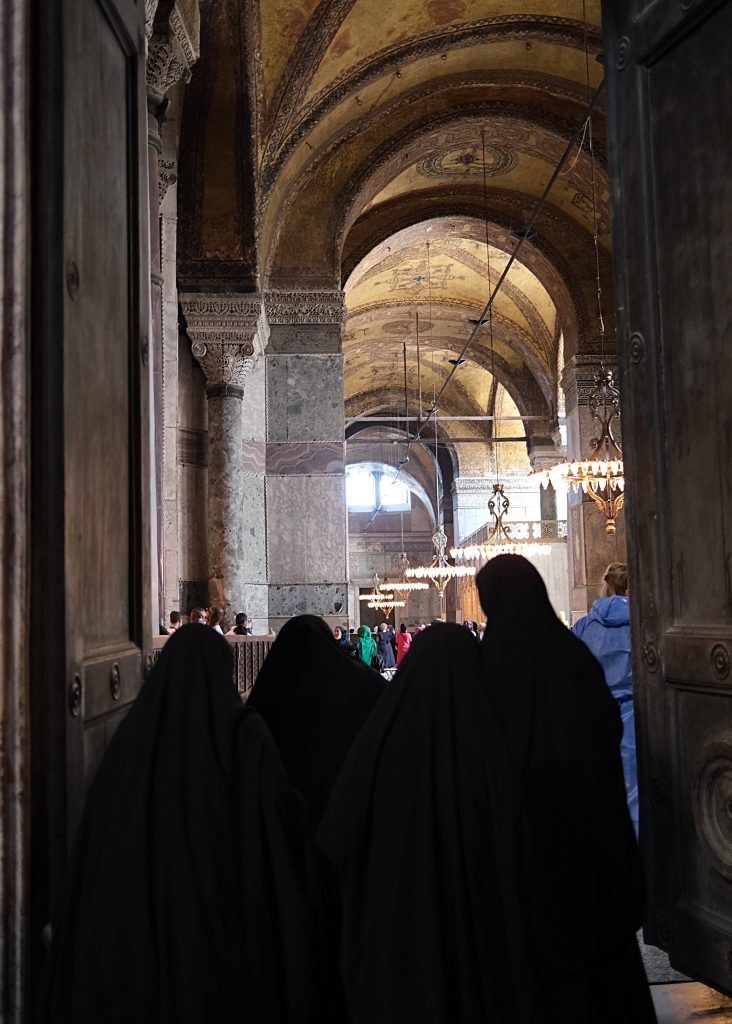
This article also appears on the author’s blog | www.sacredjournalism.org
Note: The historical background information presented in this essay is taken from Gülru Necipoglu’s article, “Hagia Sophia from the Age of Justinian to the Present.”



